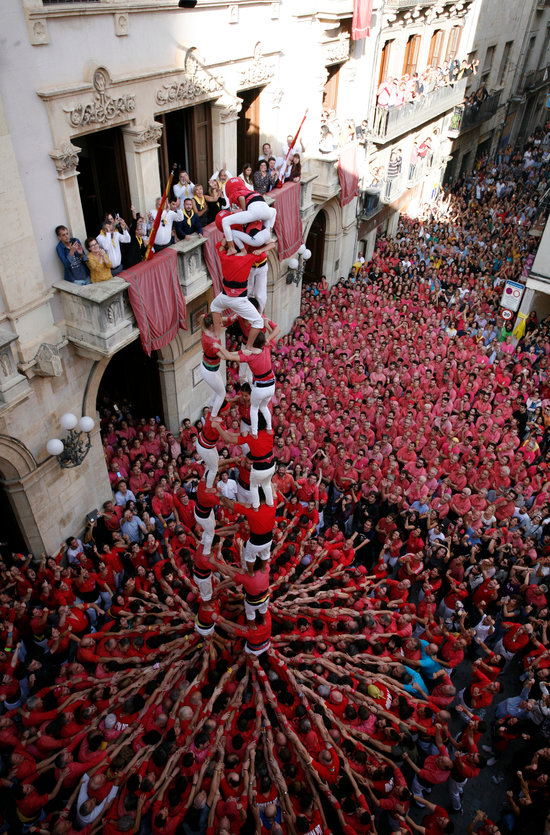A decade since human towers declared part of UNESCO Heritage of Humanity
Numbers of ‘castells’ teams have doubled and spread throughout the world

It has been 10 years since the Catalan tradition of human towers, known as ‘castells’, was declared one of the Masterpieces of the Oral and Intangible Heritage of Humanity by UNESCO in 2010. Since then, groups or ‘colles’ have doubled, going from 56 to 102, and the custom has only grown in popularity.
This anniversary however, feels partially shrouded. Due to the Covid-19 crisis, human towers were unable to go ahead this year, whereas usually there would be around 900 events and 10,000 ‘castells’ built each year.
What are human towers?
First documented in the 17th century, the stunt sees large groups forming tiers of differing numbers of people standing on the shoulders of those below them.
A human tower is only complete once the 'enxaneta', usually a child who can be as young as five, clambers to the very top of the structure and raises their arm.
'Castells' will sometimes come crashing down, although the 'castellers' have their own human safety net in the dozens of team members supporting the tower's base, otherwise known as the 'pinya'.
There are 'colles' in towns and cities all over Catalonia, each with their own colored shirts, that spend months practising at building the tallest and most complex human constructions.
A decade of growth
Human towers have grown in international recognition, for example Castellers de Vilafranca, or ‘Verd’, who are considered one of the best human towers teams, performed in California in 2019.
The Catalan tradition has spread worldwide, with groups appearing throughout Spain such as the ‘Gatos de Madrid’ as well as globally, in Paris, Montreal and Melbourne to name but a few.
“From the time of the economic crisis we experienced from 2010 to 2012, interest in popular Catalan culture has grown, also thanks to the independence movement.” Sergi Font, from the Human towers groups association (CCCC) explained to the Catalan News Agency (ACN).
Change within Catalonia
The increasing attention and participation in the sport has meant changes within Catalonia as well.
Marcel Serra from the Sant Cugat human towers stated that he thought this mounting recognition had “impacted the way people view human towers.”
As a result, they have incorporated “a more conscious and rigorous analysis” when practicing.
The Villafranca Verds’, also highlighted that within Catalonia the UNESCO recognition has “protected” the towers from European or Spanish interference, fearing limitations such as those faced by other Catalan traditional practices.
Covid-19 and this year’s celebration
This year the celebrations have been postponed due to the pandemic. Although it had been hoped that antigen tests might help the competitions go ahead, it was deemed too expensive at a possible cost of 150,000 euros a week.
However, tower’s groups have already begun to plan next year’s season. The CCCC have proposed three options, a start prior to the summer or in summer, a season in autumn or that there will be no season next year.